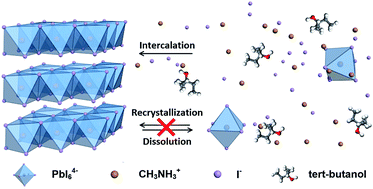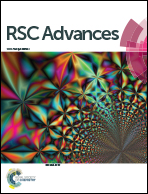Formation of high-quality perovskite thin film for planar heterojunction solar cells†
Abstract
Constructing uniform, flat perovskite thin films is of paramount essence to achieve high performance and reproducible perovskite photovoltaic devices. However, the sequential deposition technique, which usually shows efficiencies over 17%, still failed to enable the formation of uniform, pinhole-free films by solution processing, whereas such high-quality films can be prepared within the vapor medium. Here we demonstrate that such high-quality film can also be realized upon a solution process via judicious choice of solvents, particularly by controlling of lead dissolution phenomenon. We found that alcohol solvents with appropriate molecular structures such as tert-butanol, can facilitate the in situ intercalation of ammonium cations into PbI2 matrix, and thus give flat mirror-like tetragonal perovskite film with resemble surface roughness to that from vapor assisted method. Planar heterojunction solar cells constructed with these solution-processed thin films yielded a high power conversion efficiency of 14.61%, extremely higher than that of conventional method under standard one sun conditions. This solvent-mediated strategy provides a new approach towards the goal of high-performance, low-cost and reproducible devices with simple solution processes.


 Please wait while we load your content...
Please wait while we load your content...